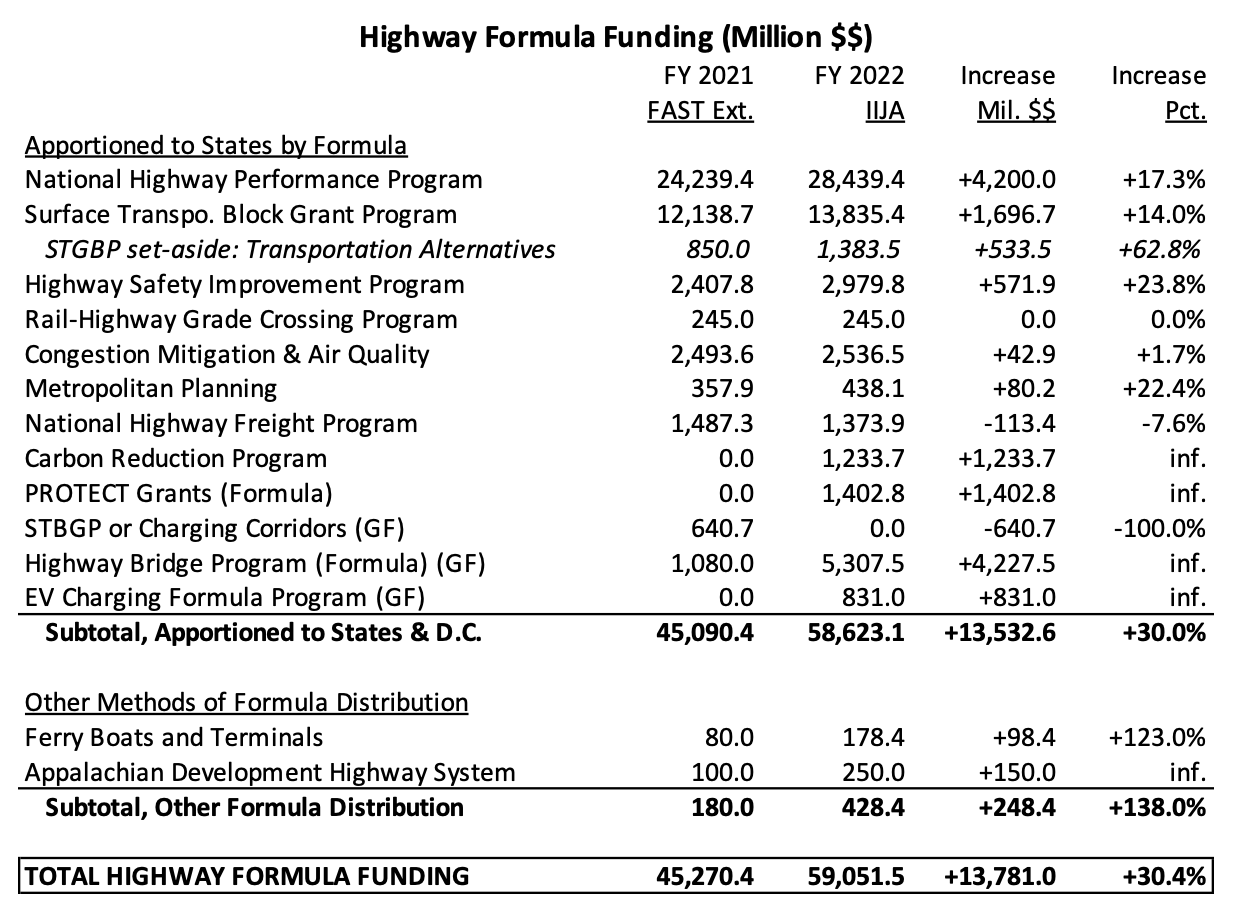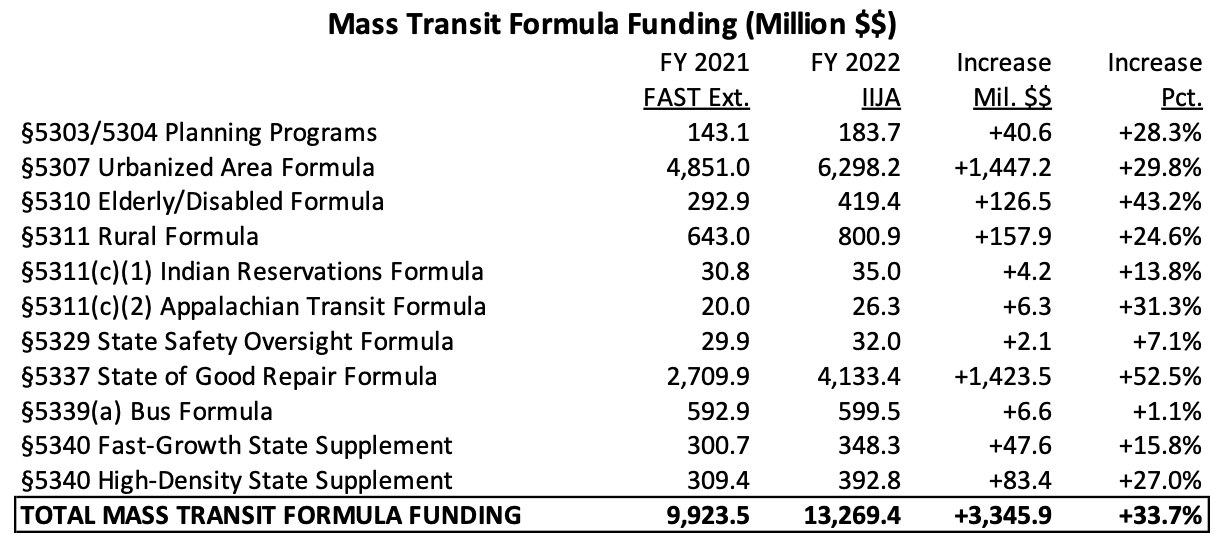After a festive November 15 ceremony, President Joe Biden signed the bipartisan infrastructure bill (the Infrastructure Investment and Jobs Act) into law as Public Law 117-58.
The ceremonies were held on the South Lawn on a crisp fall day. While the expected politicians spoke (Biden, VP Harris, Speaker Pelosi, Majority Leader Schumer, and Senators Sinema and Portman, the two lead bipartisan negotiators), the proceedings were bookended by speeches from two union workers (both female), the first from United Steelworkers Local 1025 in Wilmington, NC who makes fiber optic cable, and one from Seattle (Iron Workers Union Local 86) who is the business manager for the local, both of whom had inspiring personal stories about the life that can be provided by a reliable union-wage job.
After everyone else spoke, President Biden made remarks in his usual, somewhat meandering style, the core of which was:
I ran for President believing it was time to rebuild the backbone of this nation, which I characterized as working people in the middle class — they’re the ones who built the country — and to rebuild the economy from the bottom up in the middle out.
This law delivers on that long-overdue promise, in my view. It creates better jobs for millions of Americans. And no one — no one earning less than $400,000 a year will pay a single penny in federal taxes because of it. (Applause.)
And it does not include — as we did the Bipartisan Infrastructure Bill, it does not include a single penny in gas tax, which I rejected because people under $400,000 would be paying it.
This law is a blue-collar blueprint to rebuild America. It leaves no one behind. And it makes — it marks an inflection point that we face as a nation.
For most of the 20th century, we led the world by a significant margin because we invested in ourselves. But somewhere along the way, we stopped investing in ourselves. We’ve risked losing our edge as a nation, and China and the rest of the world are catching up.
Our infrastructure used to be rated the best in the world. Now, according to the World Economic Forum, we rank 13th in the world. Well, that’s about to change. (Applause.)
Things are going to turn around in a big way. For example, because of this law, next year will be the first year in 20 years American infrastructure investment will grow faster than China’s. We’ll once again have the best roads, bridges, ports, and airports over the next decade. And we’ll lead the world into the 21st century with modern cars and trucks and transit systems.
We’re going to do this by building again and moving again.
Mitch Landrieu to be public face of IIJA implementation
Before signing the bill into law, the White House announced Biden’s signing of Executive Order 14052, “Implementation of the Infrastructure Investment and Jobs Act.” EO 14052 creates a new Infrastructure Implementation Council, to be co-chaired by the president’s top economic adviser, Brian Deese, and a new “White House Infrastructure Coordinator,” who is former New Orleans mayor Mitch Landrieu. (It was Deese’s office that put together all of the original American Jobs Plan except for the resilience stuff.) The Secretaries of Agriculture, Commerce, Energy, Interior, Labor, and Transportation are to be members, as are the heads of OMB, EPA, and OPM, as well as other senior Presidential advisers.
But the Task Force is only given one charge: “The function of the Task Force is to coordinate effective implementation of the Infrastructure Investment and Jobs Act and other related significant infrastructure programs within the executive branch.” And the boilerplate language in section 4 of the order makes clear that nothing in the order takes away from any existing rights or authorities possessed by any Cabinet Secretary or agency head, so the Task Force appears to be a forum for the White House to coordinate rollout deadlines and media events between agencies, and to settle disputes between agencies in an organized way when the IIJA gives shared responsibility (like between the Energy and Transportation Departments, who are supposed to establish some kind of joint office to advise the EV charging station programs).
But the creation of the Task Force is not expected to interfere with the opening of the financial floodgates triggered by the President’s signing of the bill.
First, the $59 billion
By mid-December, the Federal Highway Administration will apportion $58.6 billion in highway formula contract authority to state DOTs, a 30 percent increase over the fiscal 2022 amounts. Another $428 million in formula-based funding will be forthcoming a little later. States will be able to fit this additional funding into their state plans almost immediately, as well as be able to plan for the next four years worth of formula funding provided, in advance, by the IIJA.

Then, the $13 billion
The $13.3 billion in mass transit formula aid to transit providers won’t hit the streets as quickly as the highway money gets to states – the transit money has to wait for the enactment of the annual USDOT appropriations act, which currently looks like Christmas under the best of circumstances, and February if things go pear-shaped. Then, there are the usual delays as the money apportioned to urbanized areas gets split up between the various providers in that UZA, a process that is sometimes contentious. But the 34 percent formula funding increase is real and will be received in the next few months.

Then, the $22 billion
The November 15 enactment date sets in motion a wide variety of deadlines for the Secretary of Transportation to issue new regulations, send reports to Congress, and give out competitive grant dollars. The fiscal 2022 tranche of competitive grants funded by the IIJA to at the SecDOT’s discretionary totals $22 billion.
Some of the funding below provided directly by the IIJA is expected to be supplemented with additional funding in the fiscal 2022 DOT appropriations bill. These include FTA Capital Investment Grants and competitive bus grants, MARAD port grants, FRA CRISI and Federal-State Partnership for Intercity Passenger Rail grants, and RAISE grants in the Office of the Secretary. It has not yet been decided whether the Administration will proceed with just one fiscal 2022 project solicitation for these programs (combining the IIJA money with the appropriated money) or if they will do two separate solicitations, one with the IIJA money that is already available, and a second one with the appropriated money whenever that gets signed into law.
To the extent that the IIJA grant programs are identical to, or similar to, existing programs (INFRA, RAISE, regular bus, CRISI), funding notices putting out the new money can be sent out fairly quickly. For the programs that are brand new (the discretionary bridge program at FHWA, the new megaprojects, culvert, and safe streets grant programs at OST, and the gigantic railroad grant program at FRA), it may take months longer for DOT policy staff to design the solicitations and for the lawyers to vet them.







